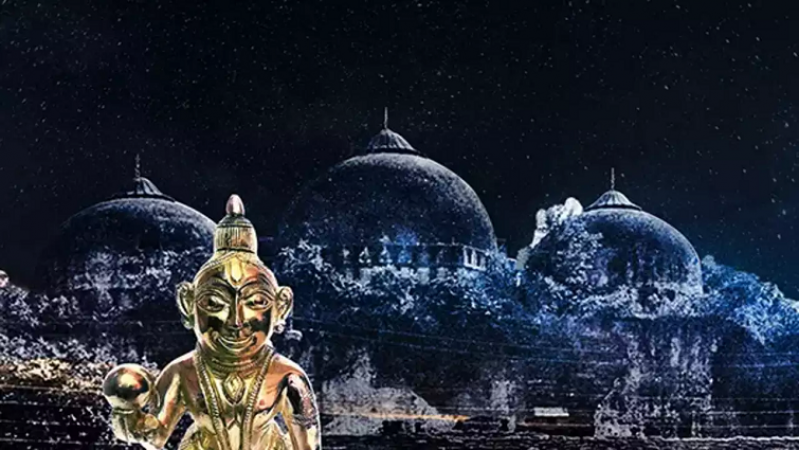
This Day In History December 22, 1949: The Mysterious Emergence of Ram Idol At Babri Masjid: December 22, 1949, marked an enigmatic night in the ancient town of Ayodhya, steeped in the legends and lore of Lord Rama. The serene town lay nestled on the banks of the River Sarayu, shrouded in a blanket of stillness that seemed impervious to the imminent event that would reverberate through history.
At the heart of this historical night was Abhiram Das, a devout follower and custodian of the Ramghat temple. The temple, a modest structure on the northern fringes of Ayodhya, stood incomplete, a testament to halted aspirations and fervor that had dimmed over the years.
As the clock neared eleven, Ayodhya slumbered peacefully, the only remnants of activity being the distant strains of Ramakatha and the soft murmurs of the Sarayu River. Abhiram Das, with a sense of purpose, made his way through the shadowy half-constructed temple, guided only by the faint light emanating from a solitary lamp.
Abhiram Das, the revered custodian of Ramghat temple, lived humbly within the complex of Hanumangarhi, a fortress-like structure adorned with an ancient temple dedicated to Lord Hanuman. It was amidst this grandeur and spiritual ambience that Abhiram Das resided, close to the singhdwar of Hanumangarhi, in a simple abode adjacent to the gaushala.
The night, serene and seemingly ordinary, was destined for an extraordinary turn of events. Within the confines of the Babri Masjid, an ancient mosque that had stood as a symbol of religious harmony, an unprecedented incident unfolded - a Ram idol mysteriously materialized, casting a mystical aura over the sacred space.
The appearance of the idol sparked a frenzy of emotions, stirring both reverence and contention among the townsfolk. For some, it was a divine intervention, an auspicious sign, while for others, it became a focal point of dispute, clouding the sanctity of the revered mosque.
The sudden emergence of the idol within the precincts of Babri Masjid was shrouded in mystery and controversy. The events of that fateful night became etched in the annals of history, igniting a contentious debate that would endure for decades, ultimately shaping the socio-political landscape of India.
The night of December 22, 1949, left an indelible mark on Ayodhya, altering its trajectory and embroiling it in a protracted legal and communal battle. The confluence of faith, history, and identity converged that night, forever intertwining the destinies of Ayodhya and the Ram Janmabhoomi-Babri Masjid site.
In the years that followed, this inexplicable incident became a catalyst for a series of events that culminated in a landmark judgment by the Supreme Court of India, resolving the longstanding dispute and paving the way for the construction of a Ram temple at the disputed site.
The mysterious night of December 22, 1949, will forever remain a pivotal chapter in the intricate tapestry of Ayodhya's history, serving as a poignant reminder of the complex interplay between faith, heritage, and the quest for communal harmony in a diverse and culturally rich nation.